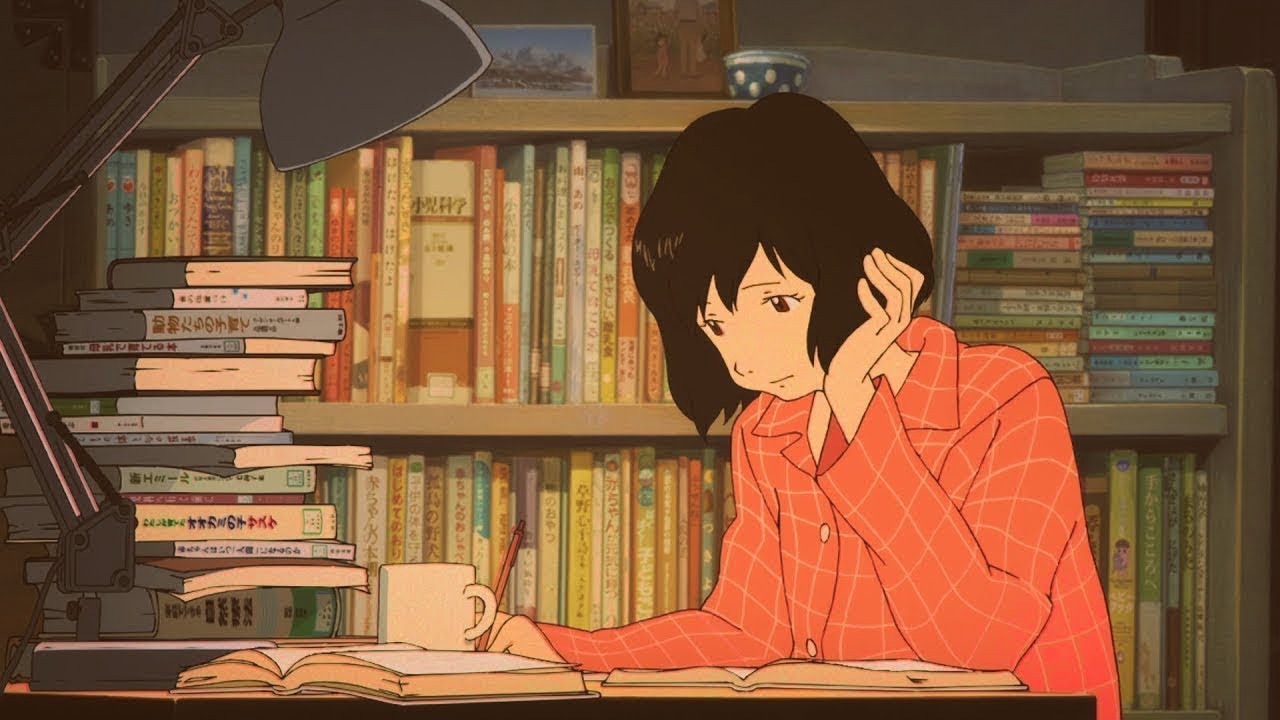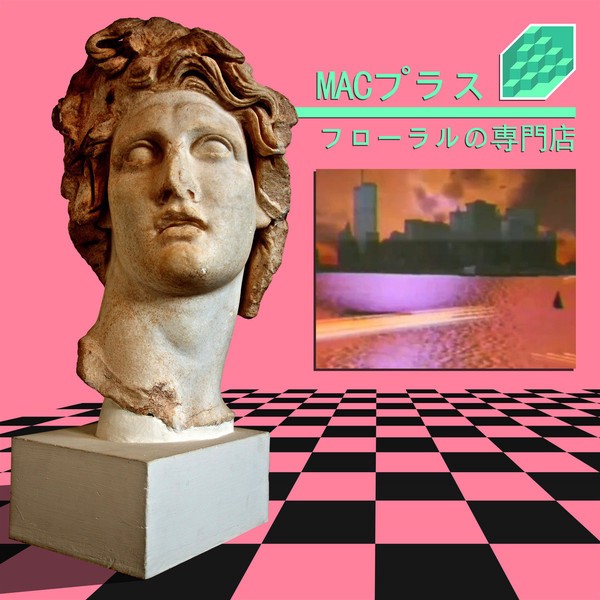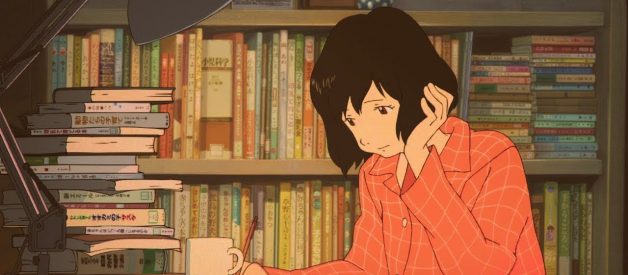Will the anime girl ever finish studying? And where was the lo-fi hip-hop scene before she began?
 Yuki of Studio Chizu?s ?Wolf Children? (2012), the original anime girl of lo-fi hip-hop
Yuki of Studio Chizu?s ?Wolf Children? (2012), the original anime girl of lo-fi hip-hop
While the studying anime girl is the face of lo-fi hip-hop, the first lo-fi hip-hop livestream I clicked on displayed a soft pink sakura tree growing on the brink of a hazy cliff over an ocean. A whispering wind rocked sakura petals across the screen and lilting sounds of lo-fi hip-hop played in the background. I was alone in my apartment, and the space seemed too big to fill with only music. So I turned to the lo-fi livestreams pushed by YouTube, easily supplementing audio with visuals.
That was two years ago. Since then, the lo-fi hip-hop scene has boomed. The anime girl is still studying. The sakura tree seems to be growing enough cherry blossoms to continuously release them to the wind. And the streams are still live.
But if you?re trying to Google the history of lo-fi hip-hop ? or more importantly, what lo-fi hip-hop is ? good luck. The genre is so broad and the community so wide that even those within it disagree over what constitutes lo-fi hip-hop. Depending on who you ask, pioneers of the genre may come from alt-rock, hip-hop or electronica scenes. Wikipedia redirects lo-fi hip-hop to chill-out music and traces lo-fi?s origins to the ?50s. Somehow, they?re all valid predecessors to lo-fi hip-hop music today.
I?ve read a lot of articles on lo-fi music. But most reduce it to something stressed college students listen to during finals. While that?s ? admittedly ? not entirely false, lo-fi music is not bottled into the four walls of a college dorm, corked by the door. When I saw Joey Pecoraro play at the Echo, the venue was packed with people. Some planted themselves along the walls, taking in the sound, while others crowded the floor, swaying to the flow. (And there wasn?t a textbook in sight.)
Obviously, lo-fi hip-hop didn?t spring out of YouTube livestreaming, and the anime aesthetic wasn?t a trendy coincidence. So I attempted to chronicle the origins of lo-fi hip-hop.
First, by identifying the definition of ?lo-fi? itself, then by briefly exploring the genres that elementally precede lo-fi hip-hop. Since lo-fi hip-hop is undeniably a fusion of genres, I explored the evolution of its parts and of low fidelity production. With that in mind, the ?lo-fi? aspect of lo-fi hip-hop becomes clearer, and the ?hip-hop? aspect becomes distinct.
The point is to understand lo-fi hip-hop itself, and with that, be better able to appreciate it and discover it for yourself. The nuance of the genre ? the emotion and sentiment it evokes ? proves to be greater and more complex than background beats and study music.
On a technical level, lo-fi comes from ?low-fidelity.? Fidelity generally means faithfulness or loyalty to something. But in the auditory context, fidelity means how accurately sound is reproduced. Think of listening to a song on an old record from the ?20s versus a song streaming on Spotify from your smartphone ? your smartphone has higher fidelity (or so you?d hope). The more accurately the medium reproduces the sound, the higher its fidelity.
So lo-fi, as in low fidelity, technically refers to music with lower sound quality. You can hear idiosyncrasies from the recording process like distortion, audible hisses or noise. As a music genre, however, lo-fi does not refer to low-quality music. So while lo-fi hip-hop may be more unprofessional and underground, the quality of the music is undoubtedly intentional.
The rough evolution of lo-fi, from an elemental perspective, can be traced back to the shoegaze or dreampop subgenres of ?80s alternative rock. While shoegaze and dreampop are used interchangeably now, dreampop actually preceded shoegaze.
Dreampop began as a subgenre of alternative rock in the ?80s, with elements of dreaminess and pop. Since this was the ?80s, a synthesizer was usually involved. Less abstract and experimental than shoegaze, dreampop maintains elements more comparable to pop music. The ethereal vocals are distinguishable from the instrumentation, and it?s not as hazy or distorted as shoegaze. Essentially, it?s more pop than psychedelic.
Formed in 1979, the Scottish band Cocteau Twins pioneered the dreampop sound and introduced the genre to mainstream music. Combining drifting vocals with atmospheric sounds, the Cocteau Twins laid the groundwork for the dreamscape that contributed to lo-fi hip-hop.
Growing out of dreampop, the shoegaze genre literally refers to gazing at your shoes. That?s how the genre got its name. Music critics weren?t impressed by artists who introvertedly stared at the ground (i.e. their shoes) as they played. But that didn?t matter to shoegazers, who embraced the term and focused on their sound more than their visual.
Shoegaze music is all about fuzz and distortion. It?s heavy and sprawling and hazy. Melodies don?t swirl as much as they drift along. And vocals sink into the instrumentation, creating a dense cloud of sound. Shoegaze music is generally traced back to Irish rock band My Bloody Valentine. While they first formed in 1983, it was their 1988 album, ?Isn?t Anything,? that pioneered the shoegaze sound. Their 1991 album, ?Loveless,? is considered not only one of the greatest albums of the ?90s, but a cornerstone of shoegaze. (If you want some shoegaze and dreampop vibes, check out this Spotify playlist!)
As the ?90s began, another branch of music was evolving into a potential progenitor of lo-fi hip-hop.
Downtempo began to emerge out of the electronica scene, characterized by slower tempos (like ambient music) but with a greater focus on beats. The idea was that if you were high enough or wanted a break from the electronic music at festivals, you could hang out in a chill-out area, with slower and less intense music.
Alternatively, DJs in Ibiza would use downtempo to calm the crowd?s energy as the night ended and the sun came up. Given these scenes, it?s not hard to imagine the grounded beats and tranquil melodies of downtempo.
Similar to dreampop, this version of downtempo incorporated synthesizers, dreamy vibes and sometimes ?80s pop. While some downtempo songs had lyrics, others had none. A popular downtempo group, Austrian duo Kruder & Dorfmeister infused electronic, pop and hip-hop songs together with ?70s soul-jazz to create downtempo remixes. The duo is also considered trip-hop DJs.
Like dreampop and shoegaze, trip-hop and downtempo are often used interchangeably. Trip-hop is generally accepted as a subgenre of downtempo, defined by a blend of electronica and hip-hop. Both originated in the late ?80s and early ?90s. While trip-hop can cover many styles, it is often recognized to have downtempo beats mixed with soul, funk, and jazz. Other commonly noted features include breakbeats, dreampop, psychedelia, melancholy tones and atmospheric sounds ? all of which are found in lo-fi hip-hop today.
To move it along, chillwave is a microgenre that sort of grew out of dreampop in 2009 and more directly ebbs into vaporwave and eventually lo-fi hip-hop.
Also sometimes referred to as ?downtempo pop,? chillwave shares the same dreamy ambiance and synthesizers as dreampop, the psychedelia of shoegaze and the ambient sounds of downtempo. But it also incorporates lo-fi elements (as in low-fidelity), like fuzz and hisses, into the music. Tracks became more looped and repetitive. Vocals became more layered. While some artists rejected the chillwave label, it?s relevant in understanding lo-fi hip-hop music today.
As the story goes, the term ?chillwave? was sarcastically coined by anonymous manager Carles of the blog, Hipster Runoff, and it stuck. (If you don?t remember Hipster Runoff or Carles and you want to jump down that rabbit hole, Vice has a great article here.) While ?chillwave? originated as a joke in the hipster blogging sphere, mainstream media recognized it as a legitimate genre. Articles appeared in The New York Times and The Wall Street Journal, analyzing chillwave. In a 2010 article from The New York Times reporting on the 24th annual South by Southwest Music Festival, Jon Pareles states,
?Some of the most packed shows were by leaders of a much-blogged microtrend variously known as glo-fi and chillwave: Neon Indian, Washed Out, Small Black, Memory Tapes, Toro y Moi. They?re solo acts or minimal bands, often with a laptop at their core, and they trade on memories of electropop from the 1980s, with bouncing, blipping dance-music hooks (and often weaker lead voices). It?s recession-era music: low-budget and danceable.?
Like all of the aforementioned genres, vaporwave grew from the underground. It?s the most closely related to lo-fi hip-hop. At this point, it?s 2010 and the Internet is going strong ? so strong, in fact, that vaporwave is also considered a meme. It began as a sort of parody of ?80s and ?90s consumer culture and capitalism. The term ?vaporwave? itself is a play on vaporware ? products announced to the public but not yet available for purchase ? and Marx?s description of sublimation in his Communist Manifesto (1848). As a counterculture, vaporwave sought to manufacture nostalgia by mixing pop songs of the ?80s and ?90s with jazz, lounge and elevator music reminiscent of shopping malls.
 Album cover of Macintosh Plus? album ?Floral Shoppe? (2011), a cornerstone of vaporwave
Album cover of Macintosh Plus? album ?Floral Shoppe? (2011), a cornerstone of vaporwave
This mix solidifies vaporwave?s irony and anti-consumerism, as American malls are symbolic of consumer- and capitalism. But beyond vaporwave?s ideology lies its visual A E S T H E T I C S ? as stylized by the genre. Vaporwave?s visual aesthetic boasts 90?s web and graphic designs. Glitch art, pixels, WordArt and Japanese lettering provide a visual dimension to the throwback beeps of computer and game console alerts.
These elements are less about conforming to the genre and more about evoking emotions or moods. The songs drone on in a way that is not only meant to transport you to an American mall of the ?80s and ?90s but strand you there ? trapped coexisting somewhere between liquid and solid states, as graspable as a cloud of vapor.
Of course, these genres are not all directly linked to one another, let alone lo-fi hip-hop. There is no clear evolutionary lineage between them, but they all share elements that mesh together in lo-fi hip-hop. The more you dig into the history of lo-fi hip-hop, the more genres pop up. Producers and listeners alike identify the different influences they recognize. It?s difficult, if not impossible, to definitively claim what the history of such a broad genre is, but it?s easier to discern by exploring core elements and their relations.
NEXT Part II: Garage Rock, Boom Bap and ToonamiAFTER Part III: From Nujabes and J Dilla to YouTube Livestreams
EDIT: This piece has been broken into three parts for better readability.


